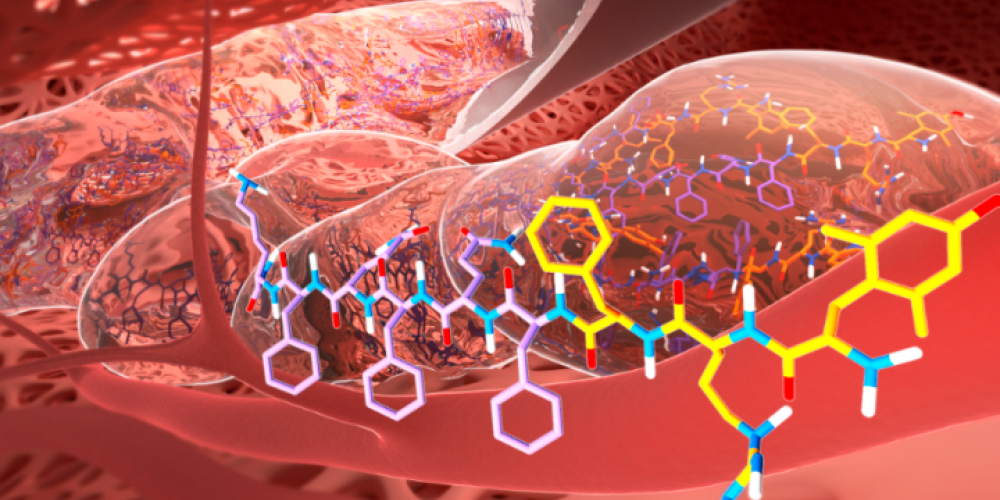
Pharmaceutical pain management often has serious side effects when using heavy opioid-based painkillers. Opioids such as morphine, fentanyl and oxycodone, when used inappropriately can become quickly highly addictive, like heroin does. Other side effects include constipation, tolerance and respiratory depression-which can lead to death in high doses. In the United States today, more people die from painkiller overdose than from heroin. It has taken real epidemic proportions, with at least 2.5 million addicts. Excessive use of these painkillers killed superstars like Prince, George Michael and Michael Jackson.
Opioids are also produced by the human body
Opioid receptors in the brain can bind to drugs derived from natural products (morphine from the poppy plant) or that are synthetically produced (fentanyl), but also bind to substances that the body produces itself. Endorphins are an example of the body's own opioid peptides. Since their discovery in the seventies, scientists have been diligently looking for ways to exploit these peptides as painkillers. After all, they are more natural, have limited side effects and are less addictive. But their advantage is also their disadvantage: they are very quickly broken down in the body and they cannot be absorbed through the skin, for example. Meanwhile, science is so advanced that one can control the functioning of the body's own peptides fairly well. In line with this, VUB researchers Martin and Ballet have started by further optimizing the opioids and their delivery by a hydrogel to reduce the overall dosage required, which guarantee a stable delivery of the drug over days and therefore, reduce the dangerous side effects such as respiratory depression and addiction, but also the underestimated problem of constipation.
A major step forward in the administration of body painkillers
The most important innovation of Martin and Ballet’s work lies in the development of the way in which the peptides enter the body and how they are broken down. The VUB scientists developed a biodegradable gel, which contains the safer bioactive peptide and is injected under the skin. The gel breaks down without leaving any traces in the body. The painkiller itself is released slowly and in a controlled manner, over a long period of time - 72-96 hours - and thus leads to lower concentrations in the body at which fewer opioid side effects occur. The duration of their medication is comparable to the current fentanyl patch, but everything is bio. Ballet: "This method actually offers an answer to the disadvantages of opioids: thanks to the gel, the active ingredient is released more slowly and over longer periods of time, reducing the total dose administered. It also reduces the risk of abuse as no 'rush' is achieved at the applied low doses.”
New ways for the future
Because the developed hydrogel can not only carry peptides, but also small molecules and proteins, in the future, many other drugs will also be delivered in this biodegradable way.
This work is part of a research programme financed by the Fund for Scientific Research - Flanders (FWO - Flanders) and is the result of an intense collaboration with Annemieke Madder and Richard Hoogenboom, researchers at UGent.